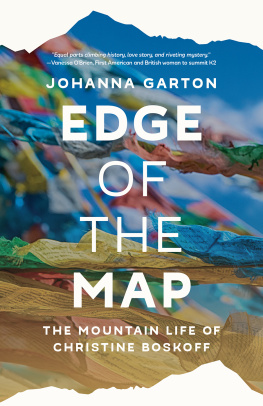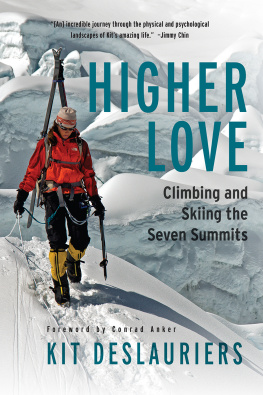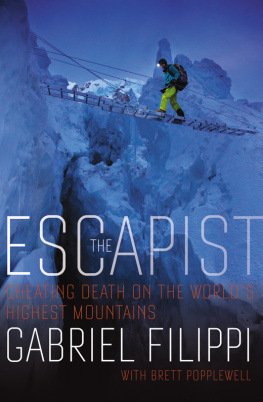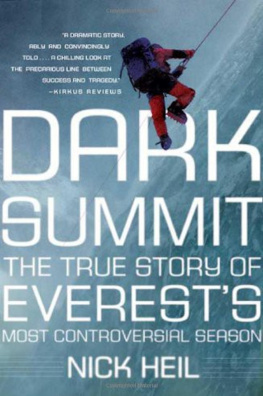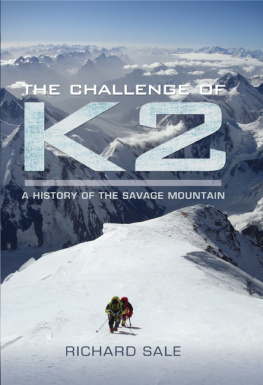
About the Book
A gripping tale of high-altitude disaster and the quest for mountaineerings ultimate prize
Each year, more and more people attempt the potentially lethal climb to the summit of Mount Everest. In 2006, eleven people died on the mountain, the highest number for ten years. But unlike 1996, there was no surprise blizzard, only the constant dangers posed by unstable ice, merciless cold, thin air and human nature.
This is the shocking true story of David Sharp, a young British solo climber who was passed by forty people as he lay dying on the upper slopes of the mountain, and of Lincoln Hall, who was left for dead yet miraculously survived.
It is a riveting account of what climbing the worlds highest peak really means for those who take on the challenge and how far they will go in their single-minded pursuit of the summit.
This eBook is copyright material and must not be copied, reproduced, transferred, distributed, leased, licensed or publicly performed or used in any way except as specifically permitted in writing by the publishers, as allowed under the terms and conditions under which it was purchased or as strictly permitted by applicable copyright law. Any unauthorised distribution or use of this text may be a direct infringement of the authors and publishers rights and those responsible may be liable in law accordingly.
Version 1.0
Epub ISBN 9780753515945
www.randomhouse.co.uk
Published by Virgin Books 2009
Published in the United States by Henry Holt and Company, LLC.
All rights reserved.
2 4 6 8 10 9 7 5 3 1
Copyright Nick Heil, 2008
Maps Jeffrey L. Ward, 2008
Designed by Meryl Sussman Levavi
Nick Heil has asserted his right under the Copyright, Designs and Patents Act 1988 to be identified as the author of this work
This book is sold subject to the condition that it shall not, by way of trade or otherwise, be lent, resold, hired out, or otherwise circulated without the publishers prior consent in any form of binding or cover other than that in which it is published and without a similar condition, including this condition, being imposed on the subsequent purchaser.
First published in Great Britain in 2008 by
Virgin Books
Random House, 20 Vauxhall Bridge Road
London SW1V 2SA
www.virginbooks.com
www.rbooks.co.uk
Addresses for companies within The Random House Group Limited can be found at: www.randomhouse.co.uk/offices.htm
The Random House Group Limited Reg. No. 954009
A CIP catalogue record for this book is available from the British Library
ISBN 9780753515709
CONTENTS
For Mom, Dad, Kayte, Jon, Taylor, Tannis, Ginny, and Minnie. My family.
A certain Samaritan, who was on a journey, came upon him; and when he saw him, he felt compassion, and came to him, and bandaged up his wounds, pouring oil and wine on them; and he put him on his own beast, and brought him to an inn, and took care of him.
Luke 10:3334
Partial List of Teams and Climbers on Everests North Side, 2006
7 Summits
Alex Abramov
Kevin Augello
Michael Dillon
Lincoln Hall
Christopher Harris
Richard Harris
Harry Kikstra
Sergei Kofanov
Ludmila Korobeshko
Vladimir Lande
David Lien
Ronnie Muhl
Igor Plyushkin
Andrey Selivanov
Slate Stern
Thomas Weber
Kirk Wheatley
Mingma Sherpa
Pasang Sherpa
Pemba Sherpa
Lakcha Sherpa
Dawa Tenzing Sherpa
Dorje Sherpa
Project Himalaya
Laurie Bagley
Duncan Chessell
Chris Klinke
Jamie McGuinness
Anne Parmenter
Hans Fredrick Strang
Scott Woolums
Chhiri Sherpa
SummitClimb
Andrew Brash
Phil Crampton
Dan Mazur
Juan Pablo Milana
Myles Osborne
Jangbu Sherpa
Asian Trekking Permit
George Dijmarescu
Lakpha Sherpani
Dave Watson
David Sharp (climbing independently)
Himex
Wayne Cowboy Alexander
Marcel Bach
Gerard Bourrat
Russell Brice
Max Chaya
Bill Crouse
Kurt Hefti
Shaun Hutson
Mark Inglis
Mogens Jensen
Bob Killip
Tim Medvetz
Brett Merrell
Terry OConnor
Ken Sauls
Mark Whetu
Mark Woody Woodward
Tuk Bahadur Sherpa
Lhakpa Sherpa
Dorje Sherpa
Phurba Tashi Sherpa
Tashi Phinjo Sherpa
Sonam Sherpa

PROLOGUE
LATE ON THE night of May 10, 1996, a twenty-eight-year-old Ladakhi named Tsewang Paljor struggled slowly down Everests Northeast Ridge. The two teammates hed been climbing with, Dorje Morup and Tsewang Smanla, were somewhere behind him, perhaps dead; he had not seen them for hours. Not that he could have helped them anyway. The storm bore down on the mountain with a primordial intensity unlike anything Paljor had ever experienced. The temperature plunged to minus 50, cold enough to freeze exposed flesh straight through in minutes. Gusts approaching eighty miles per hour ripped across the high escarpments, threatening to fling Paljor off the ridge like a bit of straw. Visibility was nil. His world extended just a few feet in front of him, snow swirling madly through the fading yellow beam of his headlamp. Paljor had run out of oxygen hours earlier, and now, fighting to complete each ataxic step, battered by dehydration and fatigue, his only chance was to make it to high camp, still a thousand feet below, where others would be waiting with extra gas and hot tea. If he remained here, above 28,000 feet, in such desperate conditions, he was doomed.
Paljor belonged to a proud expedition, some forty men strong, led by Mohinder Singh, a commander for the Indo-Tibetan Border Police and one of Indias most accomplished mountaineers. Singh was vying to put the first Indian on the summit of Everest via the legendary Northeast Ridgethe route where Mallory and Irvine had vanished in 1924, a line of ascent that would thwart attempts for another thirty-six years. The Chinese had been the first to complete the ridge, in 1960, and many teams and individuals had ascended the route since, but it would hardly diminish the accomplishment pending for Singh and his climbers. Theirs had been an auspicious enterprise, almost entirely without setbacks during the two months they had been on Everest. Finally, at around six P.M. on May 10, Singhs radio had crackled to life: Smanla, Paljor, and Morup reported that they were standing on the summit.
The tempest was approaching its crescendo, but Singh and the others gathered at Advanced Base Camp erupted into cheers. This is a magnificent achievement, for our expedition and for our country!, Singh shouted into the handset, the wind roaring, bowing the tent walls. Now, he urged, the climbers must hurry down without delay.
The next morning, Singh received word from high camp, at 27,300 feet, that the trio had not returned. This was devastating news, with an added complication since he had already phoned the Indian prime minister, Narasimha Rao, to inform him of their success; telling Rao that the three men were now lost was not a task Singh relished. But he didnt give up hope. Although there had been no contact since the evening before, it was possible his men had been able to ride out the night.
Next page

